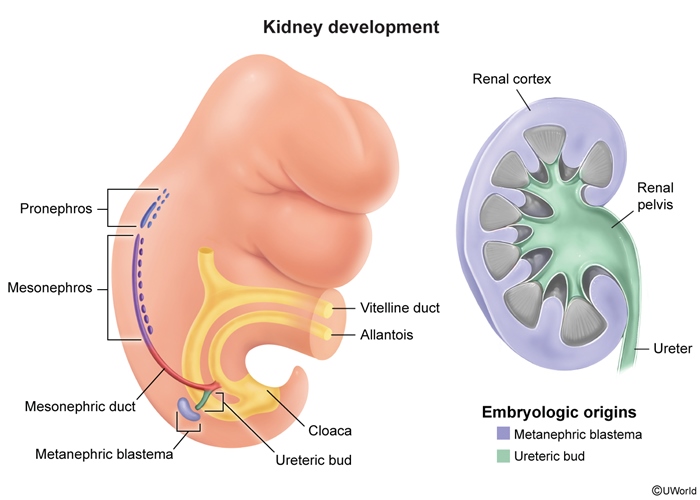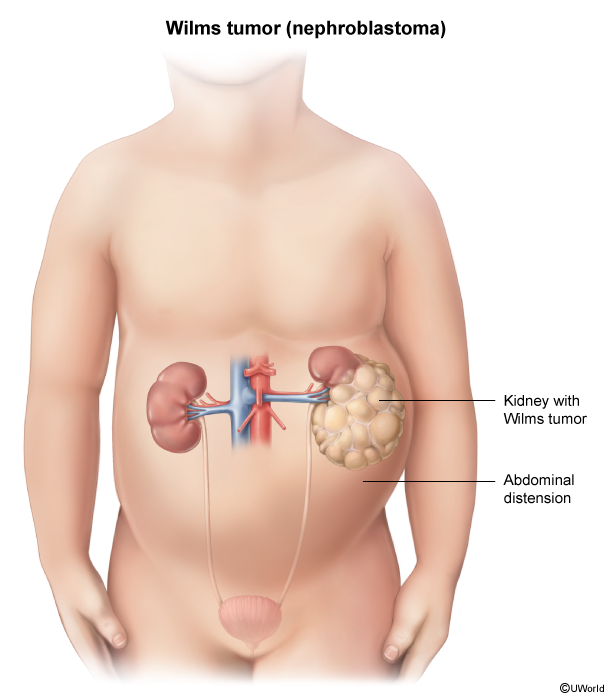Wilms Tumor
Article Sections
Introduction
Wilms tumor, also known as nephroblastoma, is a renal malignancy that originates from embryonic kidney cells. It is the most common renal malignancy in children.
Pathophysiology and risk factors
Wilms tumor arises within the metanephric blastema from embryonic kidney cells that fail to undergo normal differentiation, resulting in uncontrolled proliferation (Figure 1). Mutations in several genes (eg, WT1) involved in tumor suppression and transcription of renal and gonadal tissue have been associated with a significantly increased risk for developing Wilms tumor. Some genetic syndromes are classically associated with Wilms tumor, including:
- WAGR syndrome (Table 1): deletion on chromosome 11p13, resulting in features including Wilms tumor, aniridia, genitourinary abnormalities, and a range of developmental delays
- Beckwith-Wiedemann syndrome (Table 2): deregulation of imprinted gene expression in chromosome 11p15, presenting with overgrowth features such as fetal macrosomia, hemihyperplasia, macroglossia, omphalocele, and risk for Wilms tumor or hepatoblastoma (
Continue Learning with UWorld
Get the full Wilms Tumor article plus rich visuals, real-world cases, and in-depth insights from medical experts, all available through the UWorld Medical Library.
Figures


